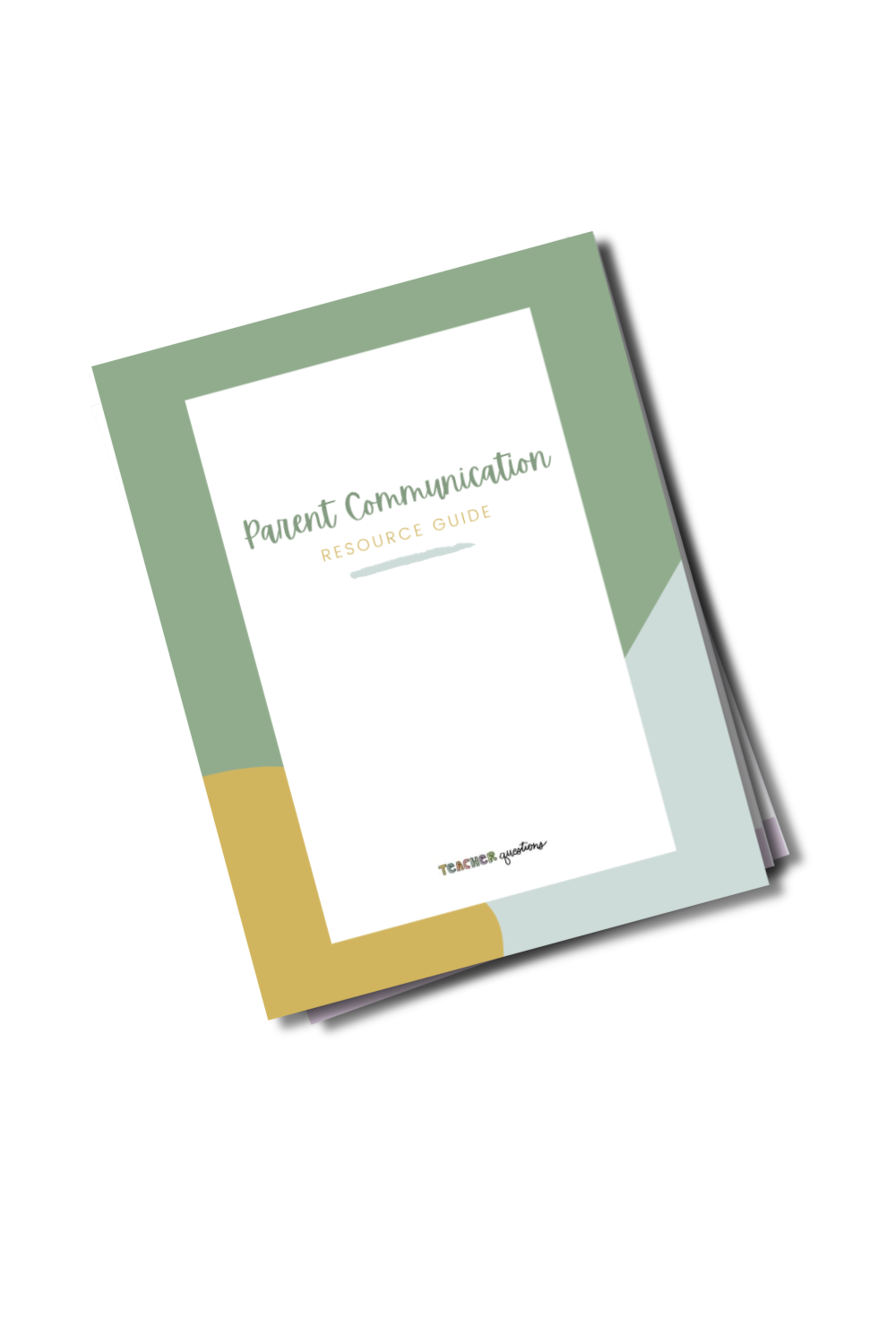How do I handle Parent Communication?
It was the beginning of September in my first year teaching when I had my first hard parent phone call. Two students had gotten into a physical fight pushing each other on the playground and it was time to call the parents. In a total panic, I remember practically sprinting to my mentor teacher’s room that day with a pen in hand and asking word-for-word what to say to each of the families.
As much as I wish it weren't true, we ALL have these moments as teachers: phone calls you dread, meetings with parents you'd rather avoid, or event nights at school where small talk feels harder than it should be. Over the years, through a lot of trial and error, I have found that when it comes to building relationships (and communicating!) with parents,
the best defense is a good offense.
(... Is that how the saying goes?)
Having a plan for how you want to communicate with parents throughout the year helps you build those crucial connections so if you do need to have tough conversations, there is already a foundation of trust established.
Before we go any further, I want to acknowledge not all communications will be with students’ parents. In the classroom I try to be very sensitive to that fact and use language like "your adults at home" so no child feels left out. For simplicity, I will continue to refer to the "adults at home" as parents in this guide, but I do not want to minimize the importance of language in showing students (and their families) you care.
Thinking Through Parent Communication in Tiers:
Relationships are built with parents (and students, for that matter) on the foundation of multiple interactions and communication points that lay a foundation of trust. I have split the different types of communication into three basic levels, or "tiers". (If you are familiar with Response to Intervention or various behavior management structures, you have probably heard of similar tiers as building blocks before.) Think of it like a pyramid...
General Communication
Tier 1 is GENERAL communication and serves as the foundation of all communications with parents. This category covers the majority of your messages and interactions. These are not specific to any particular family, but provide a base for all other tiers of communication. This might include correspondence like Classroom Newsletters, class-wide emails, calendars, sending out the lunch menu, information about parties or field trips, etc.
Personalized Communication
Tier 2 is when you get a little more PERSONALIZED. These messages are targeted and essential for relationship building in a positive or neutral zone. Examples might be: notes home about areas of student growth or impromptu conversations at student events that help build a bridge with parents throughout the school year. These give you opportunities to get to know the parents in your room as well as allow them time to get to know you.
Focused Communication
Tier 3 is FOCUSED Parent Communication and is likely the most feared type of communication (though it makes up the smallest percentage of interactions). This tier includes some of those earlier examples: meetings, hard phone calls, extra relationship building needed, etc. All parents in your classroom should receive communications from the first two tiers, but communications in this tier are a direct result of something specific that needs to be addressed: an incident involving the student, emerging behavioral patterns, etc. Communications in this tier can be difficult to navigate but we will walk through how to handle some of these tougher situations, and plan for these very important conversations, in the hopes that you are able to take a potentially negative situation and partner with parents and student to achieve the best possible outcome.
Building relationships with parents is a year-long pursuit, so building a strong foundation is crucial. We will be talking over the next few posts about how to make that happen within each tier. Stick around!
Want the guide to all things Parent Communications in the classroom? Just drop your email address below & I’ll send it to you!



